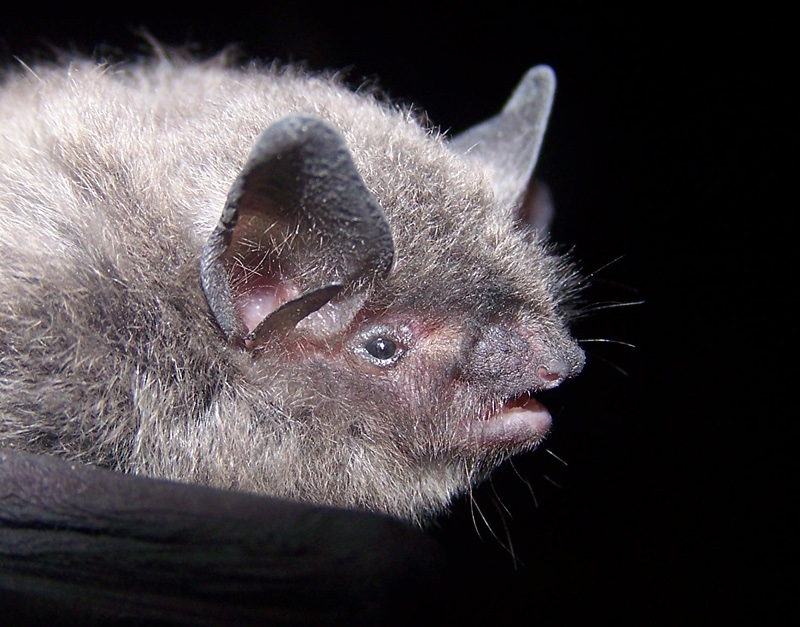Unexpected Plants and Animals of Indiana: Indiana Bats

Despite their name, Indiana bats are found in more than 20 states. The species was first found in southern Indiana’s Wyandotte Caves where they live in close, social groups. During the winter, up to 500 bats can huddle for warmth underground within a single square foot. Their scientific name, Myotis sodalis, is actually Latin for “mouse ear companion.” While that companionship has helped Indiana bats survive for generations, it is now facilitating the spread of a deadly disease that is devastating their population.
First documented in 2006, white-nose syndrome spreads rapidly. It has killed millions of North American bats over the past decade. Named after a powdery white fungus that grows on the hairless parts of bats, white-nose syndrome spreads on surfaces and through bat-to-bat contact.
“Bats spend a lot of time sleeping and really shut down when they hibernate in caves,” said Patrick Zollner, professor of quantitative ecology. During hibernation, bats lower their body temperature and metabolic rate, increasing their susceptibility to white-nose syndrome.
The fungus causes behavior changes in bats that make them more active than usual, burning the fat they need to survive and killing the vast majority of those infected.
 Photos provided by: Caroline Byrne, Bat Ecologist
Photos provided by: Caroline Byrne, Bat Ecologist “One reason bat populations are so sensitive is they are not prolific breeders like other small mammals,” said Zollner. Indiana bats give birth to a single pup each summer, making it hard for their numbers to rebound.
Though the effects of the population decline are visible, specifics are hard to determine. This fall, Sally Martinez, a graduate student in Zollner’s lab, began work to unravel the impact.
“The Indiana DNR has a massive amount of data, before and after the outbreak began,” Zollner explained. “Sally is diving in and analyzing that data to answer what the consequences of losing so many bats in Indiana are and if other bats are taking over those spots.”
“It can be hard to manage bat populations, said Martinez, "but the more information we have, the easier it is to conserve them.”
Bats often face an uphill battle when it comes to securing support for conservation efforts.
“Since the pandemic, bats have been viewed very negatively by the public,” said Martinez. “Public perception of wildlife influences management practices directly, and so it has been difficult.”
“Bats generally get a bad rap in the context of our culture,” elaborated Zollner. “A lot of the negative stereotypes are misinformed, coming from a place of ignorance and fear, which is not very productive.”
Bats are an important part of Indiana’s ecosystem. “Bat guano provides nutrients to invertebrates that serve as a major food source for animals, such as fish and salamanders,” explained Martinez.
“The agricultural benefits bats offer are vastly underappreciated,” Zollner continued. “The benefits amount to billions of dollars a year because of the pest control and ecological services they provide."
While some people fear bats, biologists find a world without bats even scarier.






